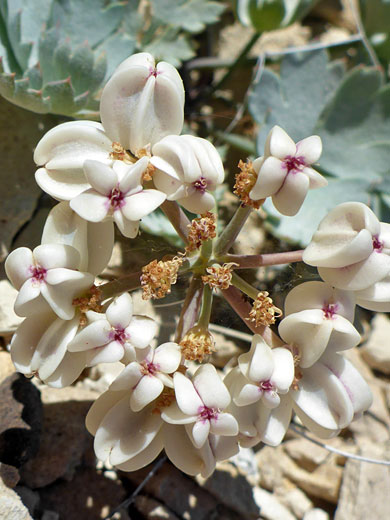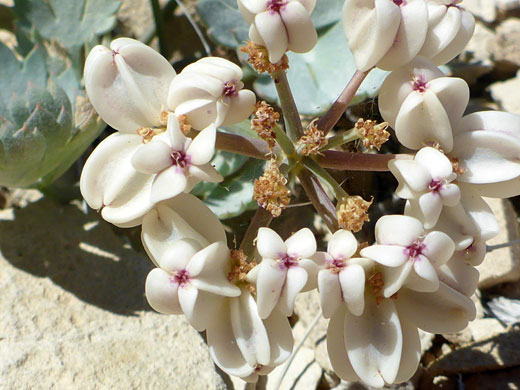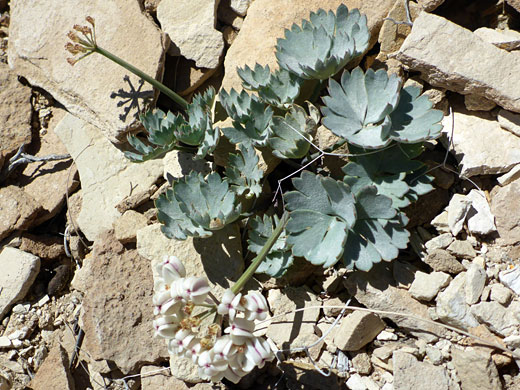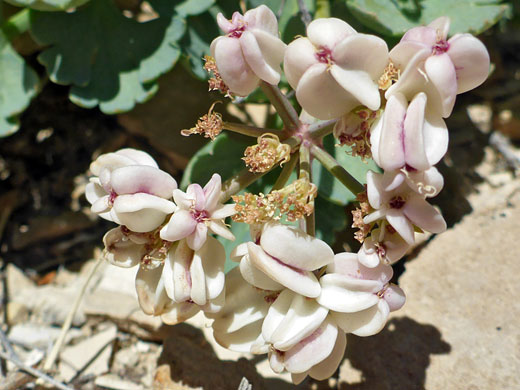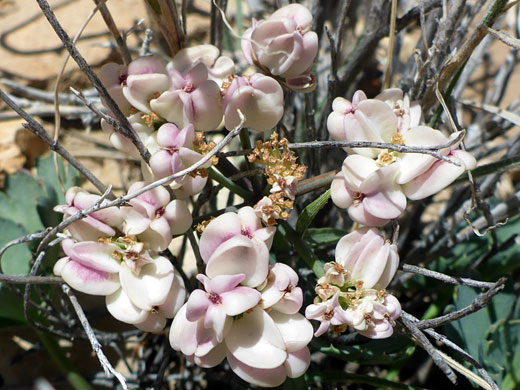Common name:
Gilman's cymopterus
Family:
Scientific name:
Cymopterus gilmanii
Main flower color:
Range:
Southern Nevada and a small adjacent area of California
Height:
Up to 11 inches
Habitat:
Alkaline slopes; limestone and gypsum soils, from 3,000 to 6,500 feet
Leaves:
Stalked, with rounded blades, divided into three broad leaflets, lobed and toothed
Season:
April to May
Cymopterus gilmanii has limited distribution in southern Nevada and adjacent parts of California - including the Spring Mountains, and some of the mountains in Death Valley National Park.
Leaves are quite distinctive; they are round in outline, often somewhat cupped, and consist of three leaflets, deeply divided into two or three lobes, these lined with broad, spine-tipped teeth. Leaves are gray-green, and hairless, up to 2 inches across, on thick stalks, up to 7 inches in length.
The umbellate inflorescence is held a little way above the leaves; there are bractlets below the flowers, but no bracts at the base of the cluster. Flowers are small, purplish, and short-lasting; more prominent, and persistent, are the white, egg-shaped fruits, which are lined with prominent ribs, typically five or six, the ribs wider than the body.
Leaves are quite distinctive; they are round in outline, often somewhat cupped, and consist of three leaflets, deeply divided into two or three lobes, these lined with broad, spine-tipped teeth. Leaves are gray-green, and hairless, up to 2 inches across, on thick stalks, up to 7 inches in length.
The umbellate inflorescence is held a little way above the leaves; there are bractlets below the flowers, but no bracts at the base of the cluster. Flowers are small, purplish, and short-lasting; more prominent, and persistent, are the white, egg-shaped fruits, which are lined with prominent ribs, typically five or six, the ribs wider than the body.
All Contents © Copyright The American Southwest | Comments and Questions | Contribute | Site Map
